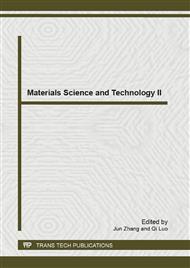p.438
p.443
p.451
p.455
p.459
p.465
p.470
p.475
p.482
Evaluation of Mercury Contamination in Surface Sediments of Southern Kaohsiung Harbor, Taiwan
Abstract:
Total mercury (T-Hg) concentration was determined to evaluation the distribution, enrichment, accumulation and potential ecological risk of mercury contamination in the surface sediments of southern Kaohsiung Harbor, Taiwan. Sediment samples from 12 locations located between the river mouths (i.e., Jen-Gen River and Salt River) and harbor entrance of southern Kaohsiung Harbor were collected and characterized for T-Hg, aluminum, water content, organic matter, and grain size. Results showed that the T-Hg concentrations varied from 0.190.45 mg/kg with an average of 0.28±0.09 mg/kg. The spatial distribution of T-Hg reveals is relatively high in the river mouth region, and gradually diminishes toward the harbor entrance region. This indicates that upstream industrial and municipal wastewater discharges along the river bank are major sources of Hg pollution; and Hg may drift with sea current to be dispersed into open sea. Results from the enrichment factor (EF) and geo-accumulation index (Igeo) analyses imply that the sediments can be characterized between moderate and moderately severe degree enrichment and between none to medium and moderate accumulation of Hg, respectively. Results of potential ecological risk index indicate that the sediment has higher to high ecological potential risk.
Info:
Periodical:
Pages:
459-464
Citation:
Online since:
July 2013
Authors:
Keywords:
Price:
Сopyright:
© 2013 Trans Tech Publications Ltd. All Rights Reserved
Share:
Citation:


